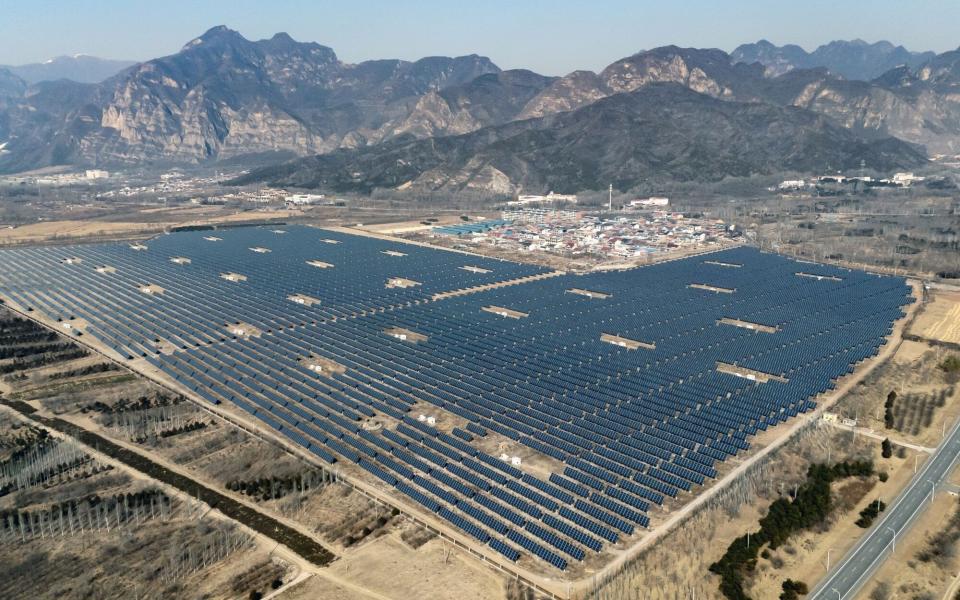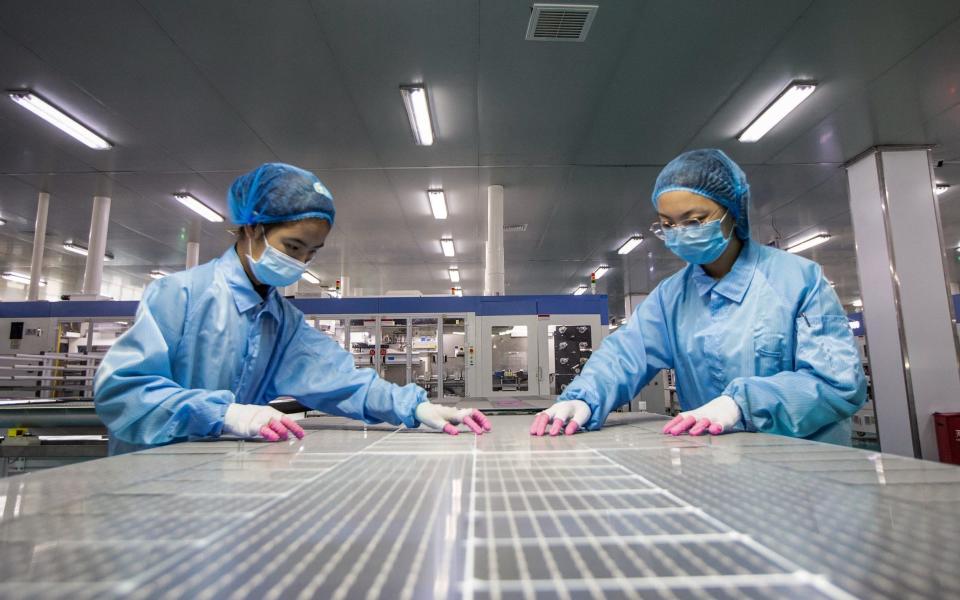How China captured the sun – and cast a shadow over Europe

Europe’s ambitious plans to expand green energy generation with “Made in EU” solar panels face a distinctly cloudy future as the continent faces a massive glut of the devices.
Millions of solar panels are piling up in warehouses across the Continent because of a manufacturing battle in China, where cut-throat competition has driven the world’s biggest panel-makers to expand production far faster than they can be installed.
The supply glut has caused solar panel prices to halve. This sounds like great news for the EU, which recently pledged to triple its solar power capacity to 672 gigawatts by 2030. That’s roughly equivalent to 200 large nuclear power stations.
In reality, though, it has caused a crisis. Under the EU’s “Green Deal Industrial Plan”, 40pc of the panels to be spread across European fields and roofs were meant to be made by European manufacturers.
However, the influx of cheap Chinese alternatives means that instead of tooling up, manufacturers are pulling out of the market or becoming insolvent. Last year 97pc of the solar panels installed across Europe came from China.
The European Solar Manufacturing Council (ESMC) has warned of a looming “wave of bankruptcies” including Dutch panel producer Exasun and Austrian module manufacturer Energetic.
ESMC secretary general Johan Lindahl has appealed for “urgent” measures to safeguard the sector, calling for the EU to buy up all those unwanted solar panels to keep his members in business.
The best estimates suggest that about 90 gigawatts worth of solar panels are stashed around Europe. That solar power capacity roughly equates to 25 large nuclear power stations the size of Hinkley Point C.
The crisis is extending back to China too, where Longi, the world’s largest solar panel manufacturer, is set to slash its workforce by almost a third as the industry struggles with oversupply.
The sheer scale of the problem was revealed in a recent report from the International Energy Agency (IEA).
It warned that although the world was installing at record rates of around 400 gigawatts a year, manufacturing capacity was growing far faster.
By the end of this year solar panel factories, mostly in China, will be capable of churning out 1,100 gigawatts a year – nearly three times more than the world is ready for. For comparison, that’s about 11 times the UK’s entire generating capacity.
For some solar power installers, it’s a dream come true. Sagar Adani is building solar farms across India’s deserts, with 54 in operation and another 12 being built.
His company, Adani Green Energy, is constructing one solar farm so large that it will cover an area five times the size of Paris and have a capacity of 30 gigawatts – equal to a third of the UK’s entire generating capacity.
“I am installing tens of millions of solar panels across these projects,” says Adani. “Almost all of them will have been imported from China. There is nowhere else that can supply them in such numbers or at such prices.
“China saw the opportunity before others, it looked forward to what the world is going to set up 10 years on. And because they scaled up in the way they did, they were able to reduce costs substantially as well.”
That scaling up meant the capital cost of installing solar power fell from around £1.25m per megawatt of generating capacity in 2015 to around £600,000 today – a decrease of more than 50pc – making it cheaper than almost any other form of generation, including wind.

Can European manufacturing catch up? “I think that ship has sailed,” says Tom Smout at Aurora Energy Research.
“Up to 2012 there was a healthy looking European solar panel industry but it was actually very reliant on subsidies and preferential treatment.
“But then European governments and other customers started buying from China because their products were so much cheaper. And China still has cheap labour and cheap energy plus a massive domestic market. It’s hard to see Europe recovering from those disadvantages.”
Britain is less involved. Its last remaining solar panel maker, GB-Sol, caters to niche and upmarket customers, not the mass market, so we have little choice but China.
The Government’s solar taskforce is about to publish the UK Solar Roadmap, which will commit the UK to an even greater reliance on the People’s Republic.
Chris Hewett, chief executive of Solar Energy UK, the industry’s trade body, chaired the taskforce with energy minister Andrew Bowie. Hewett said the report would recommend a fourfold expansion of UK solar power.
That means Britain’s solar farms will expand from 18 gigawatts now to 70 gigawatts by 2035 – mostly in big solar farms across the English and Welsh countryside. In practical terms we will be covering an area of countryside the size of Middlesex with Chinese solar panels.
When the sun shines on Europe and the UK, it is the Chinese who are smiling.
